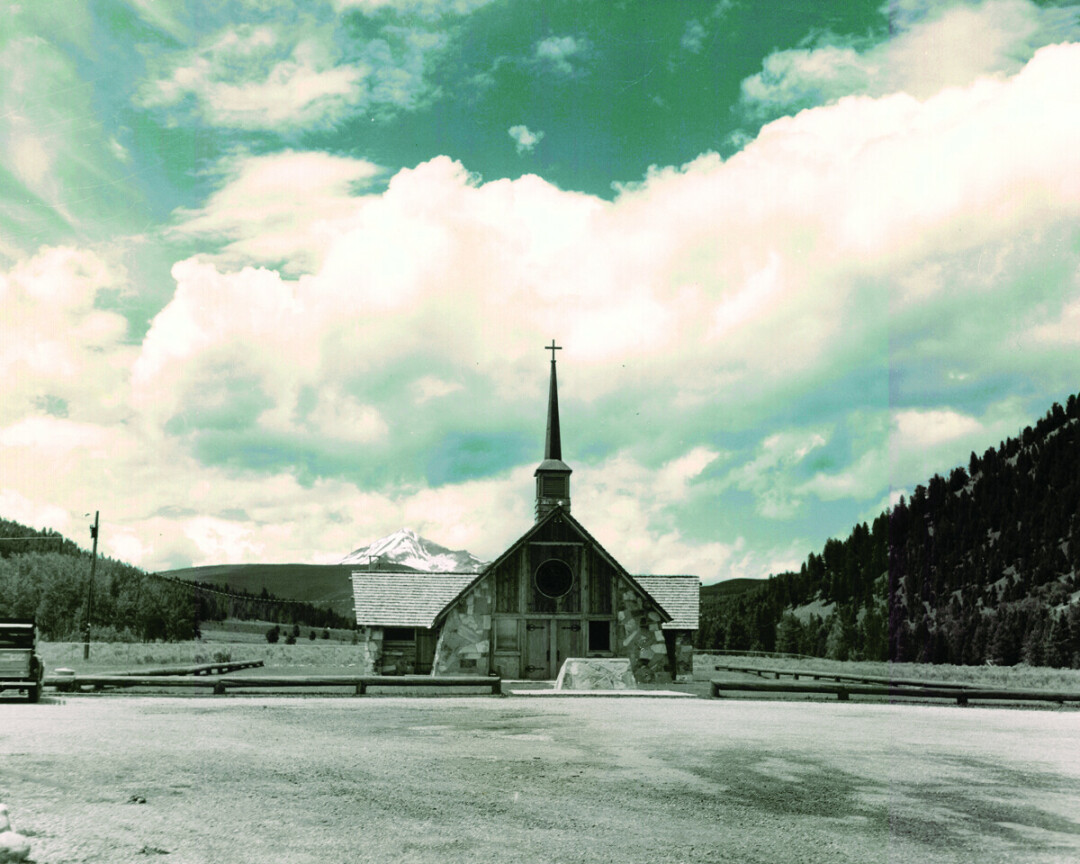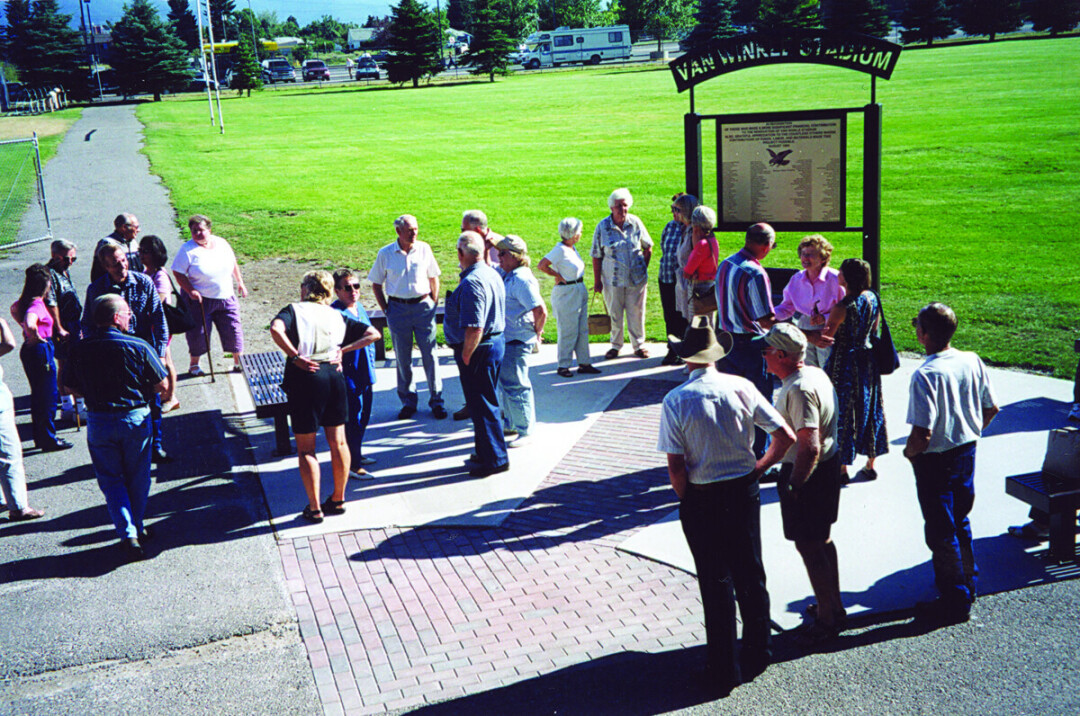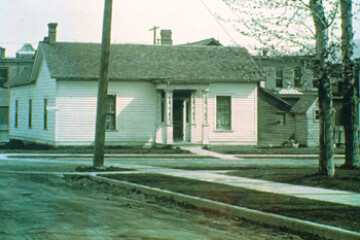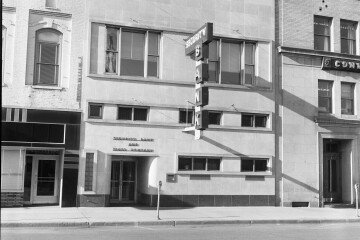An Emptiness No One Else Can Fill: The Stories Behind the Memorials
May usually marks the changing of seasons and is a signal for us to begin summer activities and adventures after a long Montana winter. It is also a suitable time to stop and remember those we have lost as we celebrate Memorial Day. While cemeteries and traditional gravestone monuments are fitting memorials, there are other memorials we encounter daily. We pass by many of them regularly, and they become so familiar that the story of the people behind them is forgotten.
Soldiers Chapel in Big Sky, Montana is a noteworthy example of a structure built in memory of those who served and gave their lives in World War II, particularly Montana’s 163rd National Guard Infantry. Nelson Story III and his son, Nelson Story IV, were the grandson and great-grandson of Bozeman pioneer and cattle rancher, Nelson Story, Sr. “Son” and “Fourthy,” as they were nicknamed, both served in Montana’s 163rd Infantry. Part of the 41st Division nicknamed “Jungleers” during the war, the 163rd saw considerable action in the South Pacific theater. On August 6, 1944, Nelson Story IV was killed in action in New Guinea.
Ten years later, Nelson Story III and his wife Velma constructed the church in Big Sky in memory of their son and other members of Montana’s 163rd who were killed in World War II. The chapel, completed in 1955, was designed by famed local architect Fred Willson and constructed in the shadow of Lone Mountain. It was dedicated on October 2, 1955, and features beautiful stained-glass windows that highlight the artwork of Sgt. Jack Gunter of the 163rd Infantry – God’s hand reaching downward to a fallen soldier.
Fred Willson, the architect of Soldiers Chapel, is himself memorialized in what is now known as Willson School, the 1937 Art Deco-style addition to Gallatin County High School on West Main Street. This landmark structure functioned as the county high school until 1957, when the new Bozeman Senior High School facility was completed further west on Main. Also used previously for junior high classes, Willson School is now home to Bozeman School District offices and a large auditorium.
Incredibly prolific, Fred Willson designed hundreds of structures during his career, which spanned five decades. Willson School remains one of Fred Willson’s most recognized and monumental Bozeman structures. The building was renamed in his honor following his death in 1956. A plaque installed inside the building reads: “Fred F. Willson Memorial Junior High School – So named in recognition of his leadership and participation in the growth of this community and the Gallatin Valley, in honor of his creative genius of which this building is a lasting example, and in appreciation of a life which exemplified the pure bright light and warmth of simple human kindness.”
Besides buildings, many local street names could also be considered memorials. One may assume that Willson Avenue, a major north-south thoroughfare providing access to historic downtown, was also named for local architect Fred Willson. Though fitting, Willson Avenue is in fact named for Fred’s father, General Lester S. Willson.
Born in Canton, New York, in 1839, Lester Willson enlisted in the Union Army in 1861. By the end of the Civil War, he held the title of brevet brigadier general. After participating in several major battles, including those at Antietam and Chancellorsville, Willson finished the war under General Sherman during his march through the South. Soon after the war’s end, Willson traveled west to Montana, where he and two associates, Charles Rich and L.W. Fuller, opened a general store in Bozeman. Upon his arrival in town in late April 1867, Willson later recalled only about twelve log cabins, a masonic hall, and a flour mill. After a few years, Willson bought out his partners and ran a successful downtown business, The Willson Company, for the rest of his life. Lester Willson passed away January 26, 1919.
Early on, what we know today as Willson Avenue was referred to as 1st Street. In 1889, it appeared as “Central” Avenue on Sanborn Fire Insurance maps. Bozeman City Ordinance No. 128, approved February 21, 1895, officially named the street Central Avenue. This name was used until October 7, 1920, when the city council voted to change the name of the street from Central Avenue to Willson Avenue. Section 2 of the new Ordinance No. 513 states: “That this change of the name of said Central Avenue is hereby made in honor of the late General Lester S. Willson and for the purpose of commemorating his civic and business activities in the City of Bozeman, during a lifetime and embracing a period of over 50 years...”
The short access road connecting the west side of Bozeman High School with N. 15th Avenue is named Ruth Thibeault Way (pronounced “Tea-Beau”). Unless one is a high school student, faculty, or staff member, one does not have occasion to travel this route, although hundreds traverse the roundabout at the intersection every day. Unlike Willson Avenue, Ruth Thibeault Way was named while the honoree was still living. Ruth Lewis Thibeault was born in 1925 and grew up in Massachusetts. She met her husband while both were serving in World War II, and after college the couple moved west, settling in Bozeman in the 1960s. Ruth began her education career at Bozeman High School, teaching English and Psychology, and eventually moved into a position as counselor.
For the next twenty-five years, counselor Thibeault made her mark on local high school students. In a 1994 Bozeman Daily Chronicle article, then-Principal Lou Gappmayer described how her dedication to students made a difference: “She honestly did a lot more than just talk. She helped the kids without coats or the kids who were short a meal.” Ruth was known as a great listener and a caring person. When she located students skipping class, she often sat down with them and just listened to what “weighed them down that day.” In her words, “All of us need someone to really listen sometimes. I got credit for a lot of things kids solved themselves by talking it out.” Ruth passed away at age 83 in 2009, fifteen years after Ruth Thibeault Way was named in her honor.
Bozeman High School is also home to another memorial. Van Winkle Stadium is named in memory of Robert Charles “Bob” or “Rip” Van Winkle, a standout football player who died of injuries sustained in a football game. Van Winkle was born in Wisconsin but moved with his family to Bozeman at age ten. He attended Emerson Junior High School and then Gallatin County High School, which was (you guessed it) located in what is today Willson School.
In the fall of 1954, Van Winkle and his Gallatin High teammates were just finishing the first half of a football game in Lewistown against Fergus High School when Robert suffered a head injury during a tackle. He was rushed to the hospital in Great Falls, where he lingered a few days before he passed away on November 2, 1954. Van Winkle is buried in Bozeman’s Sunset Hills Cemetery with the inscription “He Died for the Game He Loved,” on his gravestone. In the 1955 Gallatin yearbook, the Senior class published a tribute to their beloved classmate: “Rip, We want you to know that we miss you... your crooked grin, your hello in the halls, your ready friendliness toward anyone, large or small. We miss your laughter, your jokes, your occasional hurt puppy looks, and, yes, even your familiar 5 o’clock shadow... You were a large part of our class, and your going leaves an emptiness no one else can fill. So, good-by to the best buddy anyone could ever have. ~ The Seniors.”
Sometimes, memorials are on a slightly larger physical scale than buildings, streets, or even football stadiums. Mountain names are another fitting option. Renowned mountaineer Alex Lowe grew up in Missoula and later attended Montana State University, where he discovered the thrill of rock and ice climbing in the nearby mountains. In 1990, he became the fortieth American to reach the top of Mount Everest. His climbing adventures took him around the world, but he also pioneered new ice climbing routes in the now-popular Hyalite Canyon area south of Bozeman.
In 1999, Alex Lowe passed away in an avalanche on Mount Shishapangma in Tibet. Thousands attended his public memorial service at Montana State University, a testament to Alex’s magnetic personality and his genuine interest in the people around him. In 2005, a 10,000-foot mountain in the Gallatin National Forest was named Alex Lowe Peak, in honor of the local climber who was so well-known throughout Montana, and across the globe.
Whether a small gravestone or a mountain, memorials serve as reminders of those who are no longer with us. They can also spark our curiosity, urging us to find the legends behind the names we see on street signs, on our favorite hiking trails, or even on an interesting headstone in the cemetery. Stories abound for anyone willing to look.





